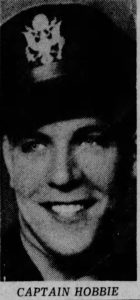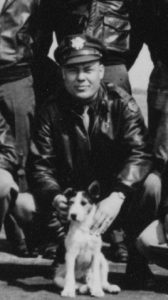Crocker, Charles William Jr.
Air Force Staff sergeant
Charles William Jr. Crocker, age 25, from Corvallis, Oregon, Benton county.
Service era: Korea
Date of death: Friday, June 1, 1951
Death details: On June 1, 1951, a B-29A Superfortress (tail number 44-86327) carrying thirteen crew members took off from Yokota Air Base, Japan, as one of eleven aircraft in the first of three flights on a bombing mission against enemy railroad bridges in the Kwakson area of North Korea. While in the target area, the formation’s fighter escort began running low on fuel and departed to refuel. During the escort’s absence, this Superfortress came under attack by enemy MiG-15 fighters. When the escort fighters returned they attempted to fight off the MiGs; however, this Superfortress had already sustained severe damage. The damaged bomber attempted to fly towards the sea, but exploded and crashed northwest of Pyongyang. Prior to the crash, four parachutes were observed leaving the aircraft. The loss occurred behind enemy lines, precluding a ground search for survivors. Of the thirteen crew members, three were captured and eventually released into U.S. custody, and three bodies were found by the enemy, buried, and returned after the war. The other seven crew members remain unaccounted for. Staff Sergeant Charles William Crocker Jr. entered the U.S. Air Force from Oregon and was a member of the 343rd Bombardment Squadron, 98th Bombardment Group. He was a gunner aboard this Superfortress when it crashed, and he was lost in the incident. Today, Staff Sergeant Crocker is memorialized on the Courts of the Missing at the National Memorial Cemetery of the Pacific.
Source: National Archives, Defense POW/MIA Accounting Agency

